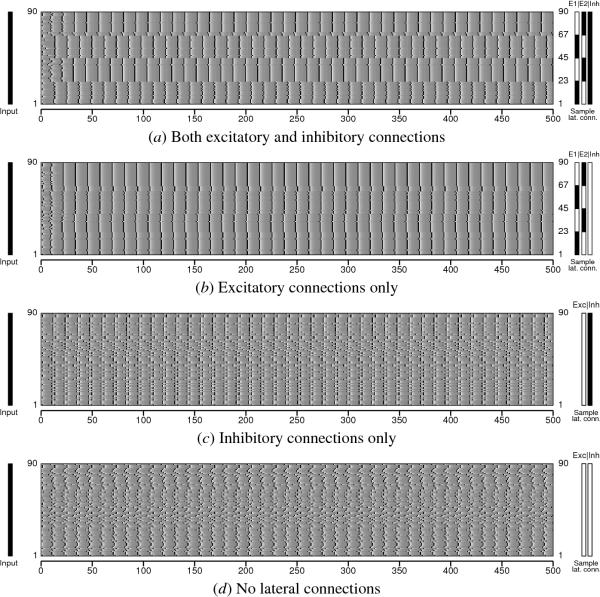
Click on the image to see a PDF version (for zooming in)
Fig. 12.4. Binding and segmentation with different connection
types. A network of 90 neurons was divided into two groups and
simulated for 500 iterations. Neurons [1..22] and [45..66] formed
the first group (E1) and neurons [23..44] and [67..90] the second
group (E2). All neurons in each group had the same lateral
connections, shown at right. Excitatory lateral connections only
linked neurons within the same group (E1 or E2), and inhibitory
connections were global. (a) With both excitatory and inhibitory
connections, the neurons within the same group are synchronized, while
those in different groups are desynchronized. (b) With excitatory
connections only, the neurons cannot desynchronize. (c) With
inhibitory connections only, no coherently synchronized groups
emerge. (d) When there are no lateral connections, neurons spike in
different phases determined by their initial state. Both types of
connections are therefore needed to establish simultaneous binding and
segmentation.
|